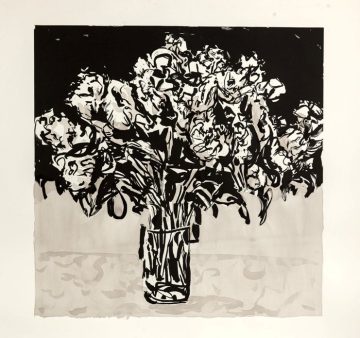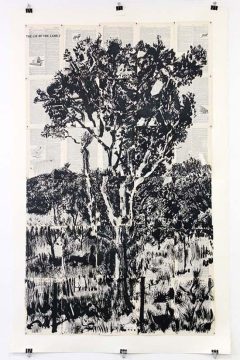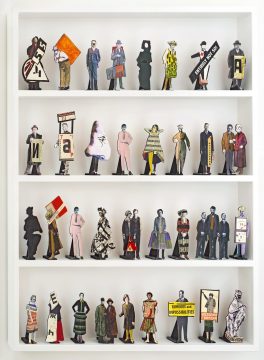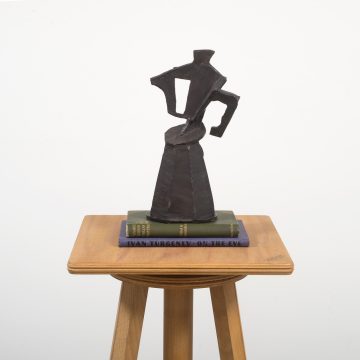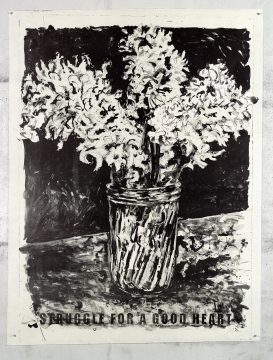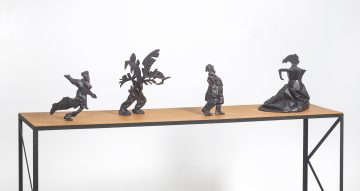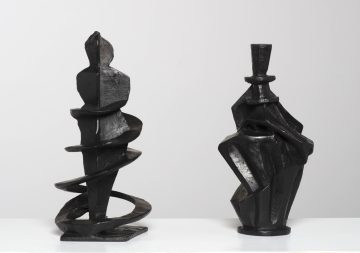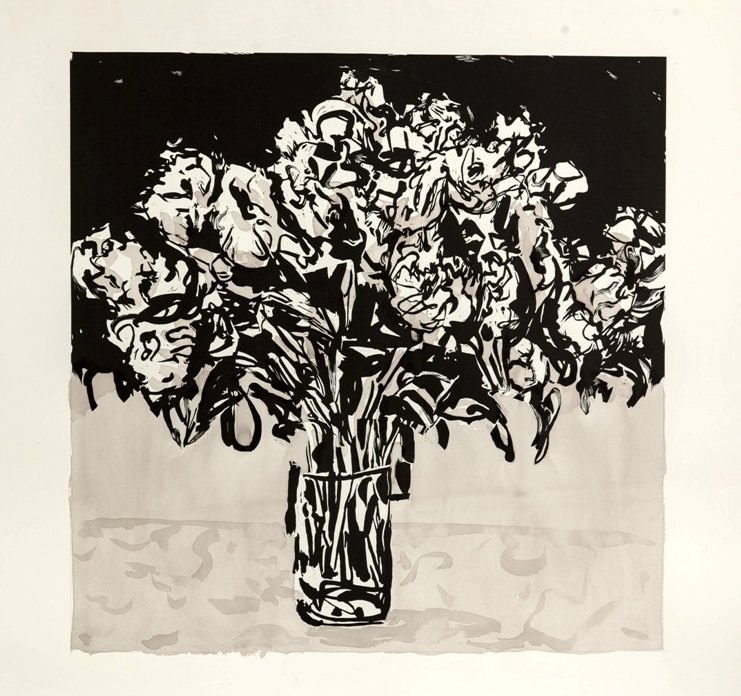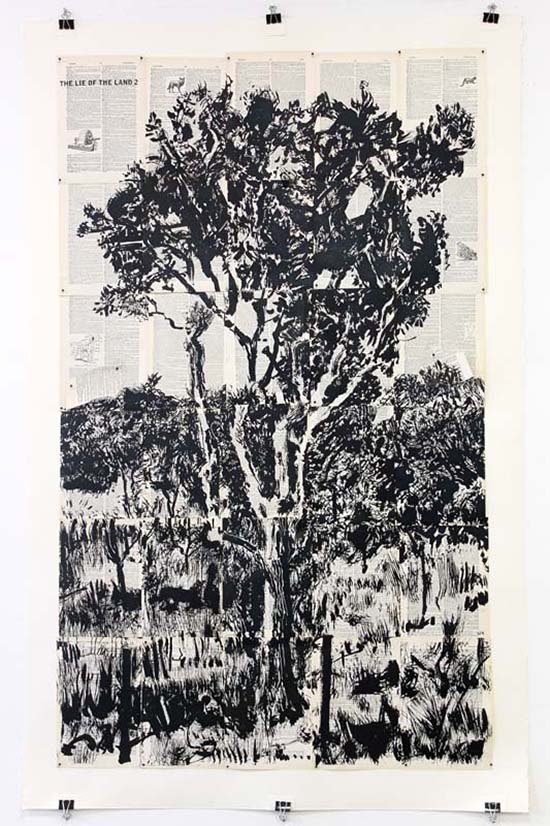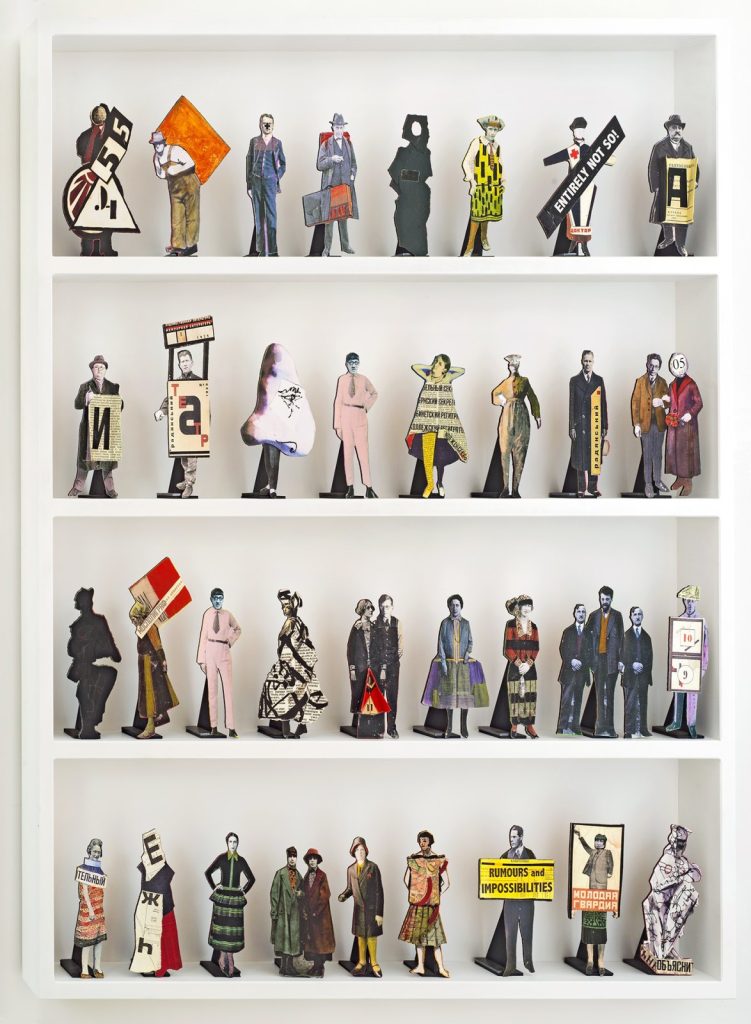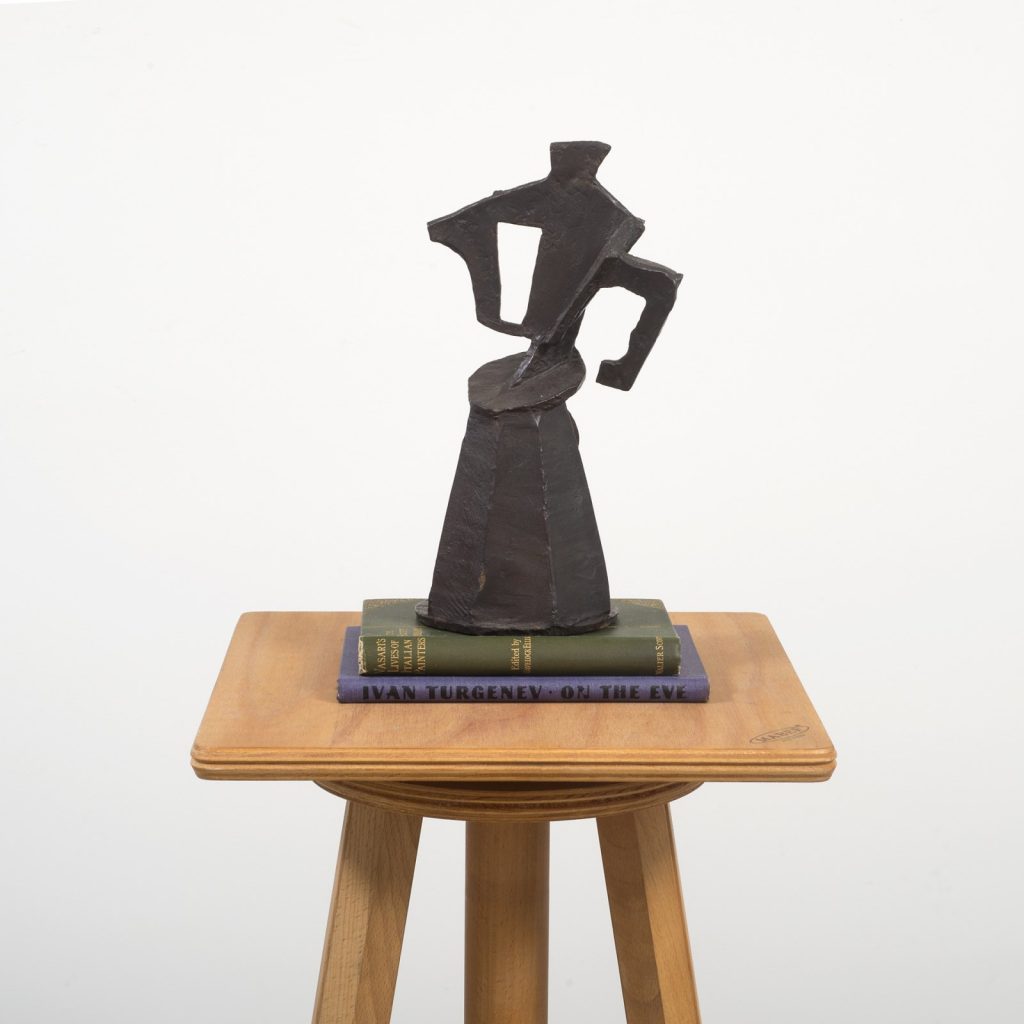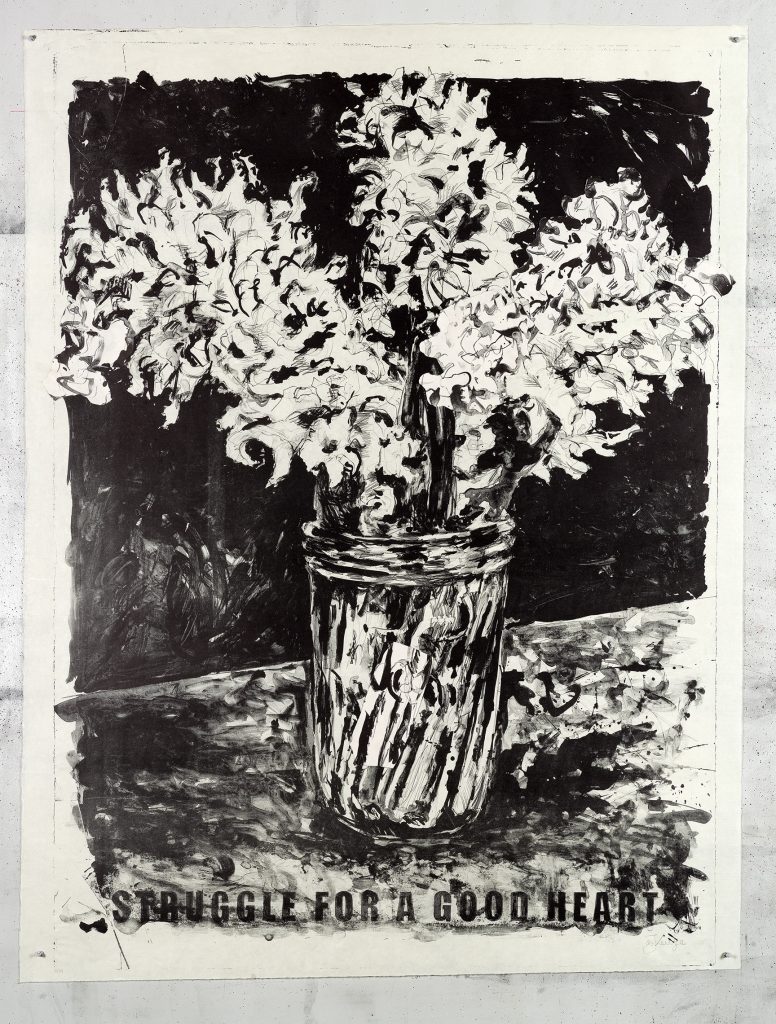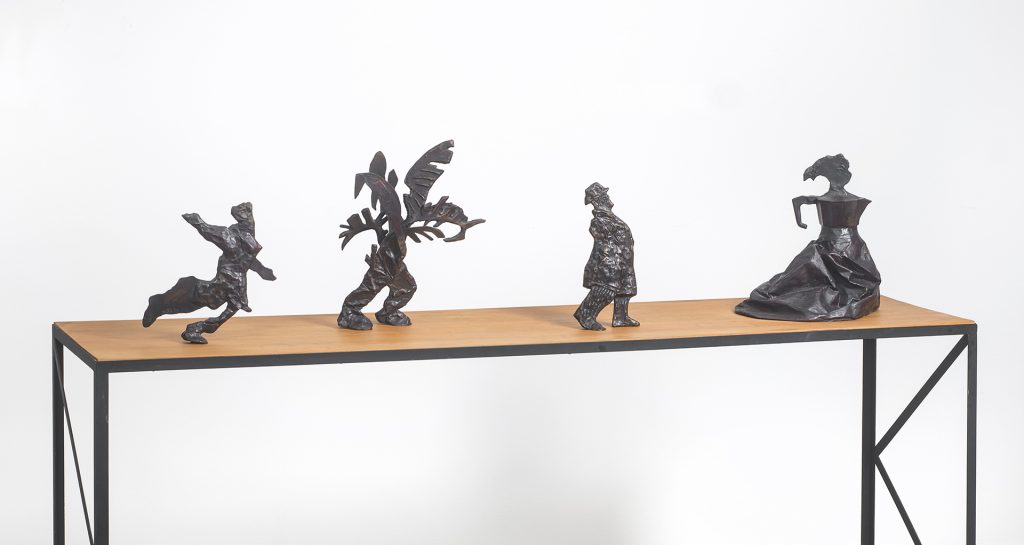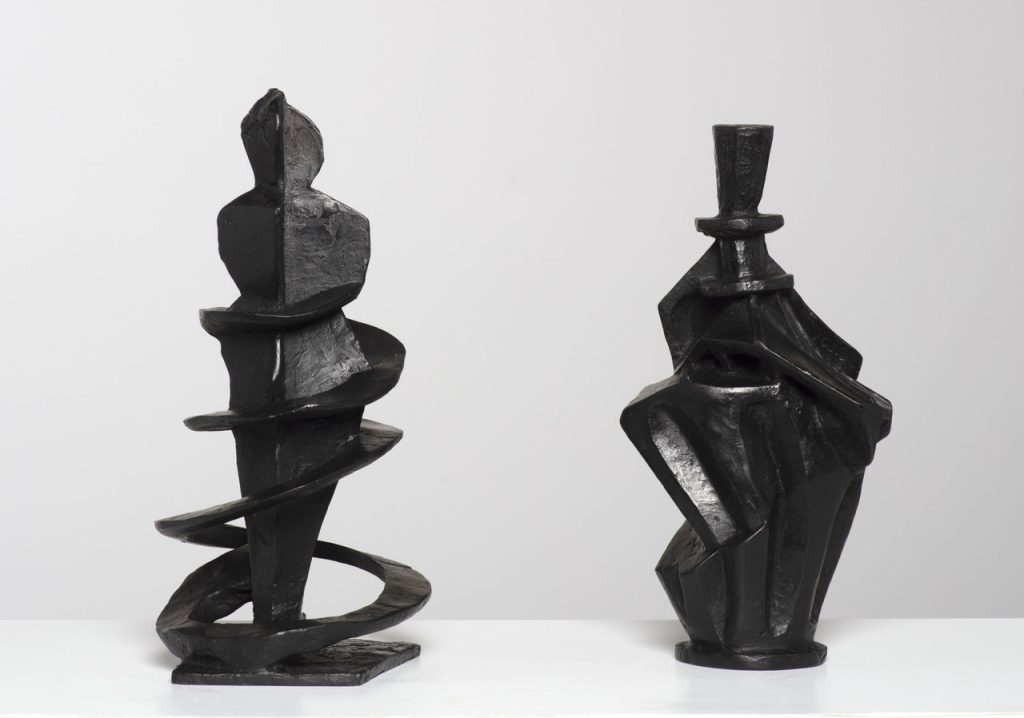The coffee pot, along with the typewriter and old dial telephones, is probably the most recognisable subject matter for William Kentridge. His now famous ‘Procession’ bronzes of 2003 were led by a coffee pot. Coffee pots have featured in various media, including video, original prints, drawings, and sculptures since the late eighties. They are classic Kentridge images.
Kentridge is attracted to simple forms and the basic shape of a coffee pot allows him to explore spatial depth and portray an object with which most are familiar but rarely look at closely. The artist asks us to look again. It is not a complicated machine but rather an object designed to serve a function, which happens to be beautiful.
The pots have an anthropomorphic element and different angles may resemble different images. In the case of this particular bronze, one angle is a woman in a gown with her hands on her hips, another is a coffee pot. This is why this particular series of sculptures are set upon rotating plinths so the viewer may better see the metamorphosis as the woman turns to a simple pot again, and other shapes in between are evoked, limited only by the viewer’s own imagination.
Kentridge is a lover of words in his work – the sculpture sits on a small pile of thoughtfully chosen second-hand books. There is also a playfulness and sense of humour to the sculpture, when the viewer turns the plinth: an almost child-like sense of anticipation as different images come and go.

